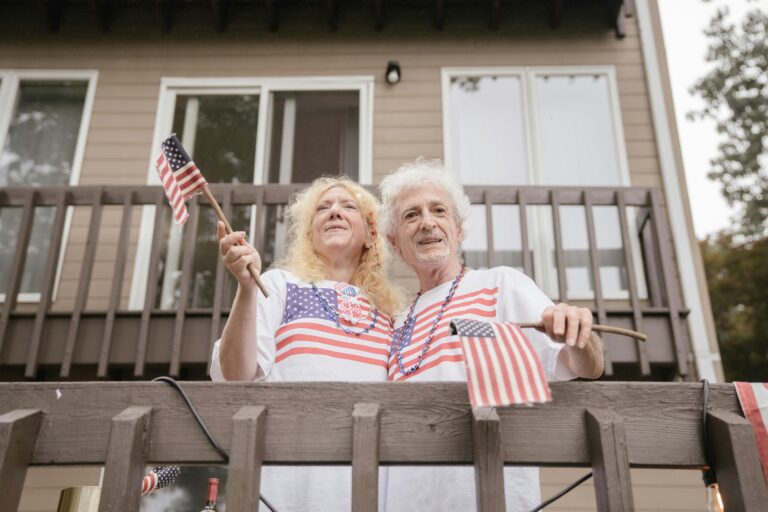
The United States is experiencing a demographic shift like never before. Every day, more than 10,000 baby boomers turn 65, and by 2030, one in five Americans will be of retirement age. This unprecedented aging of the population is placing immense pressure on the nation’s senior housing infrastructure—a pressure that is quickly revealing a major gap between supply and demand. The senior housing shortage is no longer a distant problem; it is a present-day crisis that poses both significant challenges and vast opportunities for investors, developers, policymakers, and communities.
The Growing Demand for Senior Housing
By 2040, the U.S. senior population (aged 65+) is projected to surpass 80 million. Within that group, over 14 million people are expected to require some form of long-term care, whether that be independent living, assisted living, memory care, or skilled nursing. Yet, despite this growing need, the development of senior housing units has not kept pace.
According to industry reports, there is already a shortfall of hundreds of thousands of units across the country, and by the early 2030s, the deficit could climb to one million or more. The shortage is especially acute in lower-income communities and rural areas where access to quality healthcare and housing options is limited.
Challenges Behind the Shortage
1. High Development Costs
Senior housing is more complex and expensive to build than standard multifamily developments. In addition to standard construction costs, developers must account for:
-
Accessibility and mobility features
-
On-site medical and caregiving services
-
Compliance with health and safety regulations
-
Licensing and certification requirements
These factors can make new projects financially unfeasible, particularly in regions with lower-income populations who can’t afford luxury senior housing.
2. Affordability Issues
The vast majority of seniors—especially those reliant on fixed incomes or government assistance—cannot afford high-end retirement communities. Yet most new developments target affluent retirees. As a result, there’s a mismatch between what’s being built and what’s truly needed. Affordable senior housing remains severely underdeveloped, leaving millions at risk of housing insecurity as they age.
3. Zoning and Land Use Restrictions
In many cities and suburbs, restrictive zoning laws limit the construction of higher-density or specialized housing like senior communities. This results in delays, higher costs, and, in some cases, the abandonment of potential projects. Resistance from local residents (“Not In My Backyard” or NIMBYism) further complicates approval processes.
4. Workforce Shortages
The senior housing industry is grappling with a growing caregiver shortage. Trained staff such as nurses, personal care aides, and geriatric specialists are in high demand but short supply. Without adequate staffing, facilities struggle to maintain quality standards, reducing their capacity to serve more residents.
Opportunities for Innovation and Growth
While the senior housing shortage presents clear challenges, it also opens the door for new ideas, investments, and policy shifts that can help meet the growing demand.
1. Adaptive Reuse and Repurposing Properties
One of the most promising trends is the adaptive reuse of underutilized buildings—such as hotels, shopping centers, and office parks—into senior living communities. These conversions are often faster and more cost-effective than new construction, and they breathe new life into struggling real estate assets.
This strategy not only helps increase senior housing inventory but also aligns with sustainability goals and smart urban planning.
2. Affordable Housing Models
Nonprofits, public agencies, and private developers are increasingly collaborating to create affordable senior housing through:
-
Low-Income Housing Tax Credits (LIHTC)
-
Public-private partnerships
-
Mixed-income senior communities
-
Modular and manufactured home developments
These models prioritize accessibility and equity, ensuring that more seniors—regardless of income—can age with dignity in a safe environment.
3. Technology Integration
Technology is playing a growing role in expanding the functionality and reach of senior housing. From telehealth and wearable devices to smart-home automation and remote monitoring, tech-enabled solutions can:
-
Enhance the quality of care
-
Reduce strain on staff
-
Allow seniors to age in place longer
-
Lower operational costs for providers
Forward-thinking developers are embedding technology infrastructure into their communities from day one, improving outcomes and attracting tech-savvy seniors.
4. Innovative Community Models
New types of senior living arrangements are gaining popularity, including:
-
Co-housing communities where seniors live together and share responsibilities
-
Multigenerational developments that foster social interaction across age groups
-
Naturally Occurring Retirement Communities (NORCs) where residents age in place with services brought to them
These models emphasize social connection, wellness, and quality of life—all key factors in preventing loneliness, depression, and hospitalization among older adults.
Policy Solutions and Government Role
To truly address the senior housing shortage, government action at the local, state, and federal levels is essential.
1. Zoning Reform
Local governments must modernize zoning regulations to permit the development of more diverse and higher-density housing types. Incentivizing accessory dwelling units (ADUs), duplexes, and community-focused senior developments can ease local bottlenecks.
2. Financial Incentives for Developers
Grants, tax breaks, and low-interest loans can make it more attractive for developers to pursue affordable senior housing projects. Streamlined approval processes can also reduce barriers to entry.
3. Support for Aging in Place
Not every senior will—or should—move to a dedicated facility. Expanding access to home modifications, in-home care services, and mobility support allows seniors to age safely and comfortably in their own homes, relieving pressure on institutional housing.
The Investor Perspective
For real estate investors, the senior housing sector offers a rare combination of demand certainty and long-term stability. As the aging population grows, so does the need for every type of senior housing—luxury, middle-market, and affordable.
Key considerations for investors include:
-
Demographic trends in target markets
-
Local regulations and incentives
-
Proximity to healthcare infrastructure
-
Community amenities and transportation access
By investing strategically and aligning with developers and service providers, investors can make a meaningful impact while realizing strong returns.

A Call to Action
The senior housing shortage is a complex problem—but not an unsolvable one. It calls for collaboration across sectors, creative thinking, and a commitment to building inclusive communities that prioritize the needs of our elders.
Addressing this crisis will not only support the aging population but also strengthen the entire housing ecosystem, create jobs, and promote economic growth. Now is the time for developers, investors, advocates, and policymakers to step up and seize the opportunity to shape a more resilient, compassionate, and sustainable future for senior living.
Because how we care for our seniors says everything about who we are—and who we want to be.





